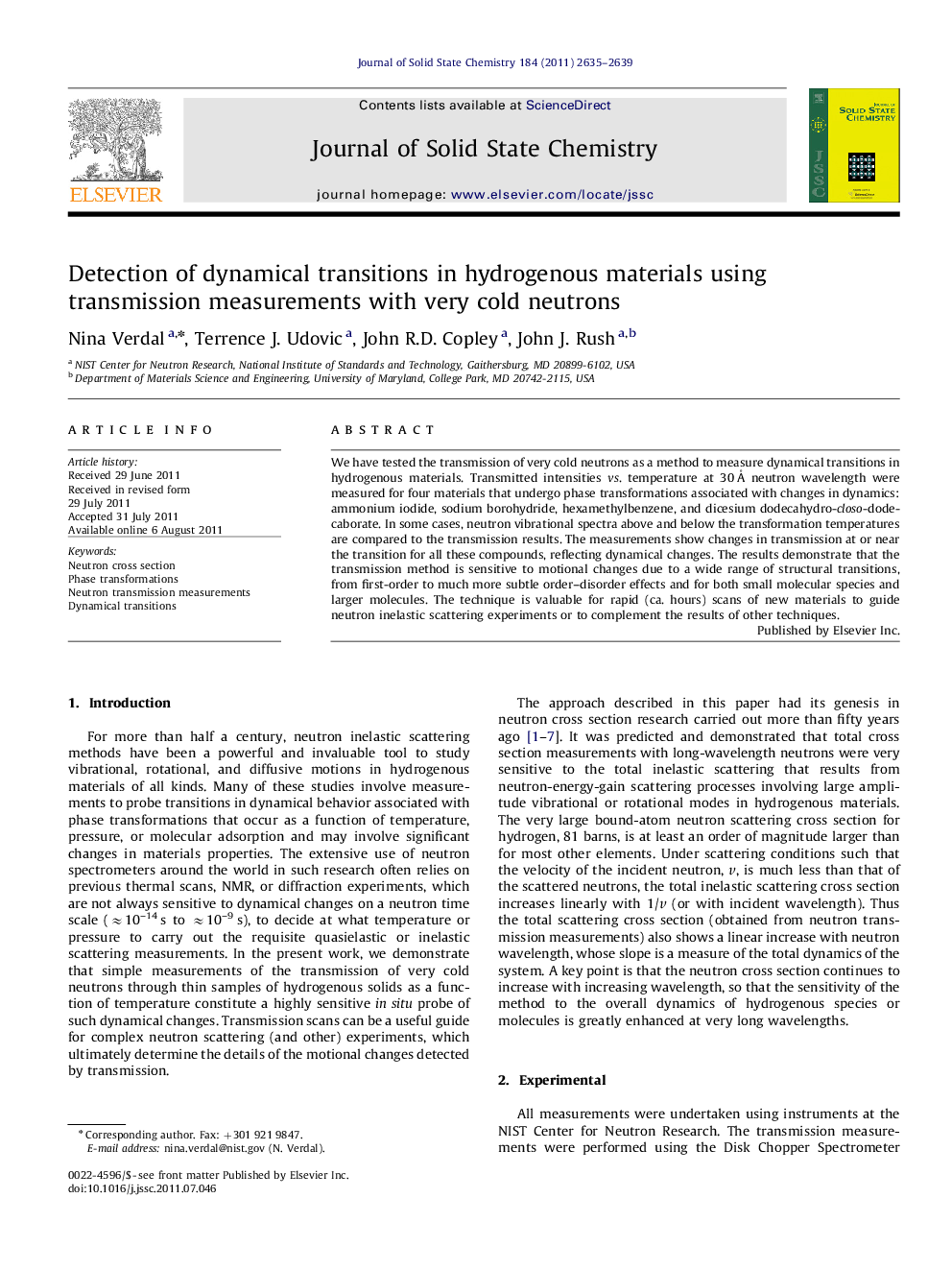| Article ID | Journal | Published Year | Pages | File Type |
|---|---|---|---|---|
| 1330596 | Journal of Solid State Chemistry | 2011 | 5 Pages |
We have tested the transmission of very cold neutrons as a method to measure dynamical transitions in hydrogenous materials. Transmitted intensities vs. temperature at 30 Å neutron wavelength were measured for four materials that undergo phase transformations associated with changes in dynamics: ammonium iodide, sodium borohydride, hexamethylbenzene, and dicesium dodecahydro-closo-dodecaborate. In some cases, neutron vibrational spectra above and below the transformation temperatures are compared to the transmission results. The measurements show changes in transmission at or near the transition for all these compounds, reflecting dynamical changes. The results demonstrate that the transmission method is sensitive to motional changes due to a wide range of structural transitions, from first-order to much more subtle order–disorder effects and for both small molecular species and larger molecules. The technique is valuable for rapid (ca. hours) scans of new materials to guide neutron inelastic scattering experiments or to complement the results of other techniques.
Graphical abstractThe transmission of very long wavelength neutrons is a highly sensitive probe of dynamical transitions in hydrogenous materials.Figure optionsDownload full-size imageDownload as PowerPoint slideHighlights► Transmission of very long wavelength neutrons can probe dynamical transitions. ► The technique is sensitive for both first-order and order–disorder transformations. ► Changes in dynamical behavior of small and large molecular species can be detected. ► This method can be a valuable guide for complex neutron scattering experiments.
